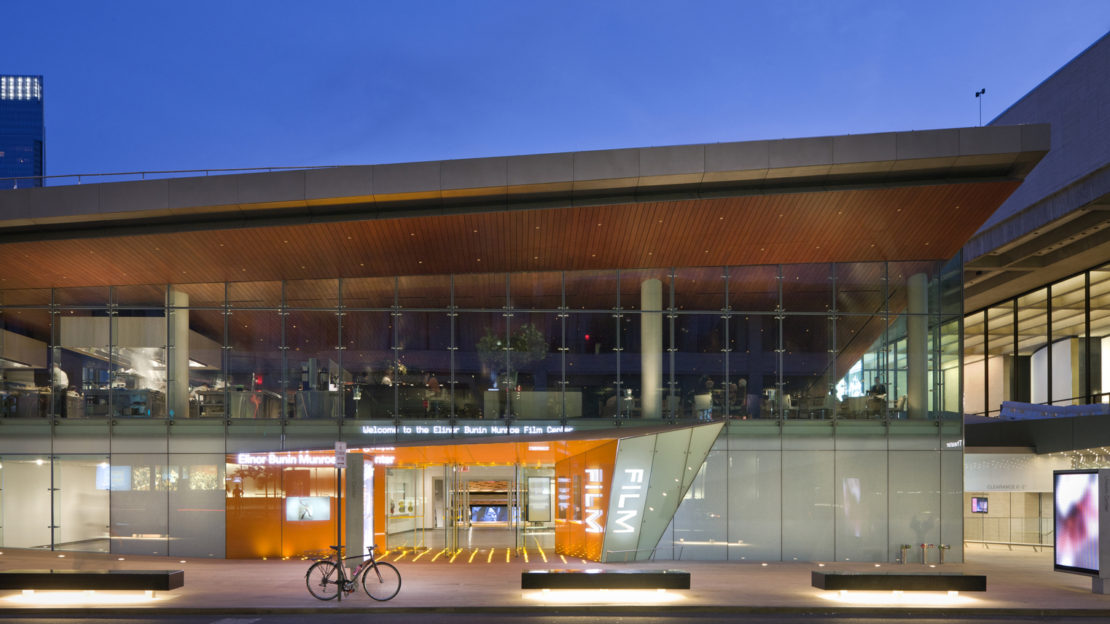Press
Arch Daily – Elinor Bunin Monroe Film Center

The Elinor Bunin Munroe Film Center, named after The Film Society board member, and award-winning filmmaker and designer Elinor Bunin Munroe, is part of the 16-acre Lincoln Center campus redevelopment and was designed by David Rockwell and Rockwell Group who also collaborated with Diller Scofidio + Renfro on the exterior. Rockwell Group transformed this underutilized office space and a parking garage into a new state-of-the-art street-level Film Center, which houses two theaters, an amphitheater, and a café. With the opening of the Film Center, the Film Society was able to dramatically expand its programming with an emphasis on film education.
The bright orange glass crystalline-shaped portal vestibule uplit by in-ground lights at the entrance to the Film Center serves as a beacon for those walking down 65th Street. The accessible and welcoming nature of the new Film Center is reflected in the lobby’s industrial, simple materials such as the poured concrete floor and Venetian plaster ceiling, and the splashes of the signature bright orange color, as in the entry vestibule. Adjacent to the lobby is the café, a comfortable neighborhood meeting hub that is visually distinctive from the film center and inviting to all – filmmakers, local residents, and tourists.
In a nod to the space’s previous incarnation, a 16-foot-wide folding garage door opens the amphitheater to the lobby to make it feel welcoming. It features a 152” Panasonic plasma screen; tiered cushioned bench seating for up to 87; maple strip flooring that cascades down the risers and has the visual effect of wrapping the space; a wood ceiling punctuated with acoustical slots; and glass side walls that change in hue from frosted up to translucent.
Sidestepping underground obstacles, the 144-seat Francesca Beale Theater and the intimate 87-seat Howard Gilman Theater are nestled deep within the space. Both screening rooms feature meticulously designed cushioned seats, wide aisles and stadium seating with unobstructed sightlines in an elegant, satisfying setting. Details such as custom faceted perforated metal, acoustically absorptive wall panels abstractly designed to look like flowing curtains typically found in Italian opera houses in the 1920s in the Francesca Beale Theater, and resin and blackened wood backlit pilasters bracketing the screen in the Howard Gilman Theater add to both the practicalities of the movie viewing experience as well as the aesthetics of the look and design.